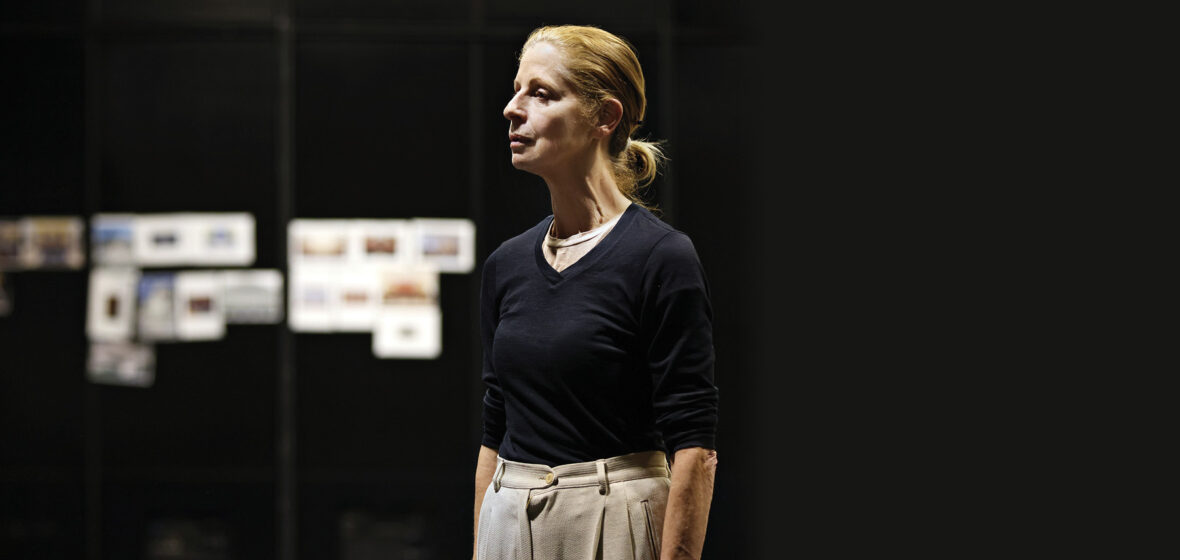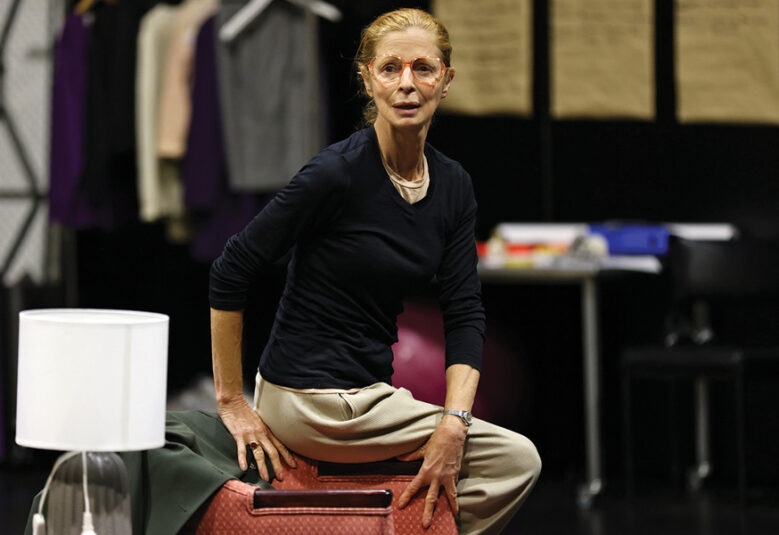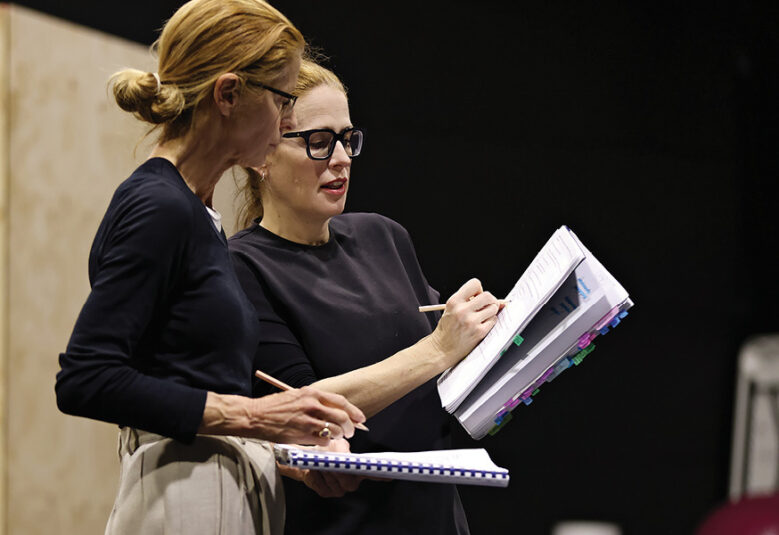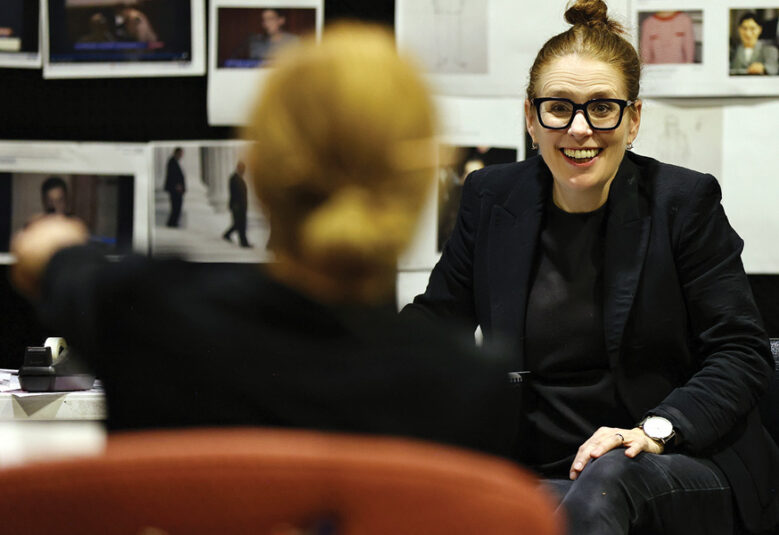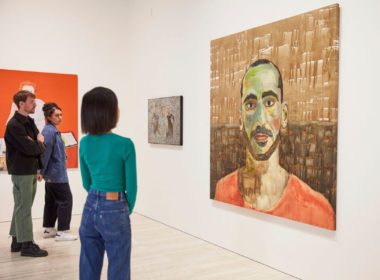Ruth Bader Ginsburg was more than just a Justice of the Supreme Court of the United States – she was, and remains, a global cultural icon. An upcoming one-woman show explores RBG’s ferocious energy and determination.
Where were you when Ruth Bader Ginsburg died? I was in a little grocer’s in an area where many American immigrants live. My telephone buzzed when the notification from the BBC flashed on the screen, and as I was reading the breaking news I noticed everyone else around me also had their heads down looking intently at their phones. A chorus of pings, buzzes and shuffles was followed not by gasps, but by utter silence. I remember at the time I barely stopped to wonder why I cared so much about the death of a judge in a country in the opposite hemisphere, or why everyone around me seem equally surprised and shocked. The recent interviews I recount here helped me find the answers.
This is not a biopic about Ruth Bader Ginsburg, says Australian playwright Suzie Miller of her new play, RBG: Of Many, One now playing at the Sydney Theatre Company (STC). At first glance, this work promises to be a typical biopic, a retelling of a life. But this is the story of one of the most famous legal personalities in the world, whose values resonated internationally as an expression of women’s rights, and Miller accordingly strives to take her work far beyond the bounds of the biopic genre.
RBG is a one-woman show, with Heather Mitchell embodying Ginsburg at different periods in her life, from the age of 13 to her eighties. The plot is framed around three fictitious interactions with three presidents: Clinton, just as Ginsburg is waiting for his decision to confirm her; Barack Obama; and finally Donald Trump, as she faces the consequences of speaking out against him. This is more than a biopic. It’s a detailed examination.
Miller is a writer in demand. Born in Melbourne, she worked for several years as a practising solicitor in NSW while slowly developing her passion for writing plays. In 2009, when she was offered a residency at the National Theatre in London, she had to decide which career to pursue. By 2022 Miller was the hot ticket item in London’s West End. Her play Prima Facie, with Jodie Comer, has just completed a successful run in the Harold Pinter Theatre and is now preparing for its 2023 Broadway debut.
But why end a rewarding year with a one-woman show about a US Supreme Court judge played by an Australian actress? “I’ve always been a really big fan of RBG’s,” Miller admits, but then again, who isn’t? Ginsburg was the symbol of equal rights and gender equality, and her poise became the personification of the tenacity of the law. Her pop culture status kept rising with each passing day of Donald Trump’s presidency as she positioned herself as a symbolic barrier against authoritarianism.
As if anticipating my question, Miller mentions Ginsburg’s controversial decision not to resign during Obama’s presidency, so he could be the one replacing her. It’s the moment that dented her legacy, in the opinion of those who admired her. But the decision makes sense for Miller, who has read everything she can find written by Ginsburg.
“The idea of separation of powers is fundamental to democracy,” Miller says. “Judges shouldn’t be told what to do by the government and shouldn’t tell the government what to do”. So it was even more surprising when Ginsburg spoke out against then-presidential candidate Donald Trump.
“That goes against the exact rule she stood so strongly by,” Miller says. This blip, this evidence of fragility in a person Miller admires, reminds the playwright that as a woman Ginsburg was not just a legal machine, but also a fallible human being. That’s the crux of the woman that Miller sets out to explore in her work.
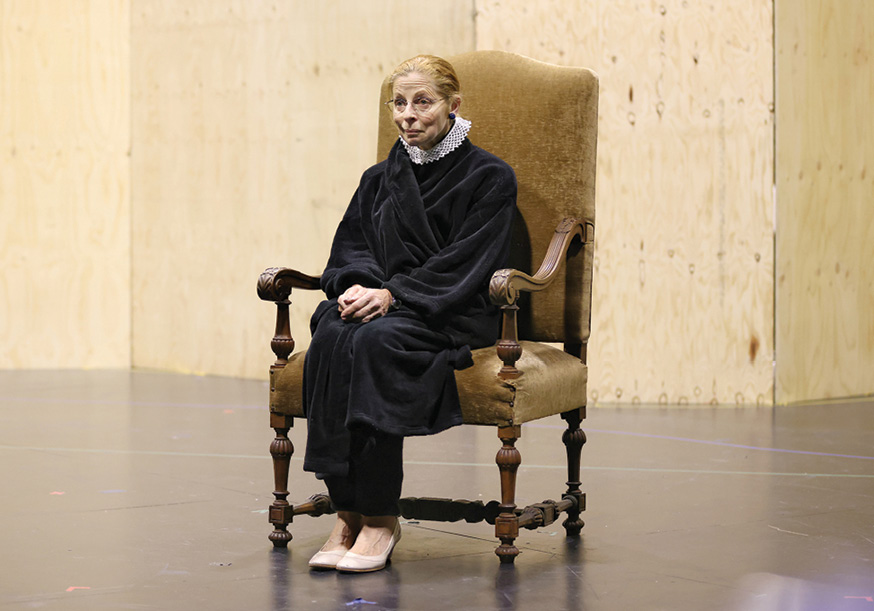
Why is an Australian woman writing about an American judge, I ask Miller. Her response: “I think any lawyer or woman around the world knows who RBG is and knows that she stood for something and was bold and brilliant. We don’t often celebrate women who are bold and brilliant, and we need to.”
In Miller’s mind, Mitchell was the only actor who could play RBG and all the supporting characters. Mitchell recalls talking about Ginsburg with Miller at a time the playwright was first considering writing about the lawyer’s life.
“I said, can I be in it?” recalls Mitchell, “and she said, I’ll write it for you.” It was as simple as that. For Miller, there was no question about who had the skill to play all the different characters and keep Ginsburg at the centre. “Heather is astonishing. She just transforms. You feel like you have RBG on stage with you.”
A director who knew how to portray the layered emotions of the work had to be found. Mitchell recalls a conversation with the artistic director of the STC, Kip Williams, during which the name Priscilla Jackman came up – someone Mitchell already knew well. “[Kip] said to me, no one can take a script like this and physicalise it like Priscilla.”
The three women collaborated on multiple drafts before production even began. Later they brought in designer David Fleischer to help them create a world that is not realistic, yet strongly supports Mitchell’s performance. “The virtuosity of the performer is central to what we’re doing,” Jackman says.
The actor’s care for the cadences of her subject’s voice illustrates the maxim that actors don’t need to present a full-scale imitation of the person they are playing.
“We honour that intimacy of the relationship that Heather has with the audience as she channels Ruth, so that they can walk out of the theatre understanding more about this extraordinary woman,”she adds.
For all involved it was essential to show the complexities of a personality who, the few times she has been portrayed in media, has been depicted with reverence, and almost one-dimensionally, as a quasi-divinity.
For Miller and Jackman, part of what makes RBG remarkable is the combination of her strengths along with her flaws and fragilities. But how does an actress embody all these elements?
“I feel so energised in the role. I’m never tired,” Mitchell says. “And I think it’s just because I’m playing someone who had ferocious energy and determination.” For Mitchell, playing Ginsburg means discovering her voice at the different stages of her life, and understanding what lay behind her speech patterns – Ginsburg, she says, was someone who spoke slowly, as if she were having six other conversations in her head, and was constantly strategising, selecting the best thing to say at any one time.
The actor’s care for the cadences of her subject’s voice illustrates the maxim that actors don’t need to present a full-scale imitation of the person they are playing. Rather, as Mitchell understands, finding the person’s inner voice will enable the actor to play the person with authenticity, in a multidimensional performance: in the case of RBG, not as someone either idolised or demonised by pop culture, but in her full humanity.
Miller provides the vehicle for this portrayal in her script: her work in the legal system enables her to apply her own experiences to the character of RBG in her play.
So, yes, RBG can’t be termed a biopic. It’s far more accurate than that.

